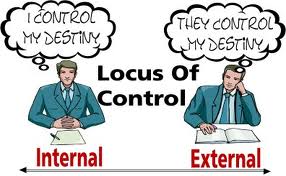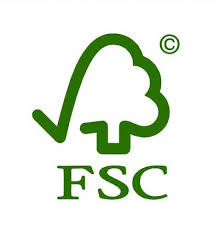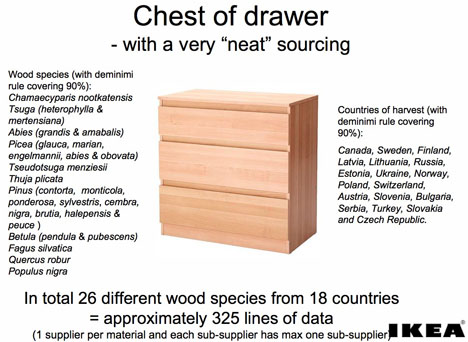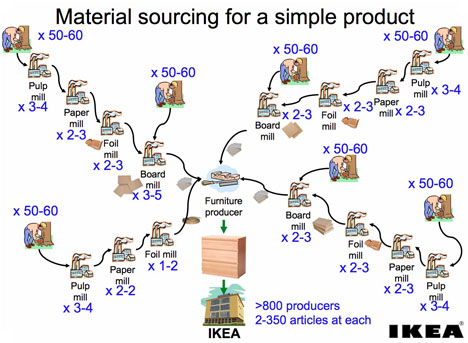On November 20th, a group of students voluntarily gathered to play two simulations or car games designed to let students experience an evolutionary process in relation to industrial ecology. Here I will shortly explain how and why the original games evolved from their original descriptions, evaluate the success of each game in the light of their learning aim, and offer improvements for both games.
car games designed to let students experience an evolutionary process in relation to industrial ecology. Here I will shortly explain how and why the original games evolved from their original descriptions, evaluate the success of each game in the light of their learning aim, and offer improvements for both games.
1. Evolutionary Mastermind
 We first played a Mastermind-type game as described by Jorinde Vernooij, with certain alterations. We did not play the three rounds as prescribed, and values earned after guessing the code were not shared between the teams because this part of the game was not as clear from the description. Furthermore, we only had four teams competing. That we did not exactly follow the game as it progressed across three stages, because we quickly got tired of the game and wanted to try something else.
We first played a Mastermind-type game as described by Jorinde Vernooij, with certain alterations. We did not play the three rounds as prescribed, and values earned after guessing the code were not shared between the teams because this part of the game was not as clear from the description. Furthermore, we only had four teams competing. That we did not exactly follow the game as it progressed across three stages, because we quickly got tired of the game and wanted to try something else.
Although the guessing part of the game was fun, it overall seemed random and without a clear purpose. The learning aim of the game was threefold; to understand (1) the impact of rules on firm behavior, (2) the effect of uncertainty of future events and particularly consumer behavior, and (3) the challenge of sustainability in the context of evolutionary processes.
The first aim was reached: the impact of rules on firm behavior quickly became clear. However the random nature of the rule (whatever the facilitator picked randomly wins) did not lead to the development of clear ecological strategies or routines. Variation occurred only through randomly chosen strategies by firms in the first round. In the second rounds, after firms received feedback on their chosen combination, problem  solving did occur upon confrontation with unwanted results (few points) and firms changed strategies. Such variation is a form of blind variation, meaning that the firms do not know which of the variants they choose will be selected.[1] Firms did not collaborate, because sharing their feedback from the facilitator would only be advantageous to others without gaining themselves. Therefore the first aim could be improved upon by making it compulsory for firms to share their results so that competition, collaboration, and imitation would also occur. One way of doing so is by using a similar principle as in the Mastermind game, by awarding every firm with key pegs giving more detailed feedback on the right code. Additionally, difficulty could be added by requiring a fourth variable and leave the ordering of the variables up to the firms, while requiring them to put them in the same order.
solving did occur upon confrontation with unwanted results (few points) and firms changed strategies. Such variation is a form of blind variation, meaning that the firms do not know which of the variants they choose will be selected.[1] Firms did not collaborate, because sharing their feedback from the facilitator would only be advantageous to others without gaining themselves. Therefore the first aim could be improved upon by making it compulsory for firms to share their results so that competition, collaboration, and imitation would also occur. One way of doing so is by using a similar principle as in the Mastermind game, by awarding every firm with key pegs giving more detailed feedback on the right code. Additionally, difficulty could be added by requiring a fourth variable and leave the ordering of the variables up to the firms, while requiring them to put them in the same order.
The second aim of experiencing the uncertainty of future events became especially clear, even without having played the part of the game where the dice is introduced. The players can feel the anguish each round of not knowing whether their guess is remotely correct. Uncertainty decreased with the feedback, but remained high. The game also shows path dependency, how the choice that the firm made initially explains the set of decisions they make after receiving feedback.
The last aim, however, became less clear because we did not play the second round where the use of the sustainability factor is rewarded. Because the use of this variable is not incentivized or disincentivized in any way, there is no reason for using it and it does not become clear how sustainability is a challenge in an evolutionary context.
Overall, the game would have benefited from a clearer explanation of the learning aim. If firms are supposed to just enjoy the fun of guessing then the game can be entertaining, but as players were looking to learn something and not finding much other than random assignment of values they quickly lost interest. Setting the right expectations at the beginning of the game, together with starting the next rounds before players get bored, will strongly improve this game. Lastly, direct and more specific feedback mechanisms will also motivate players and increase the learning opportunities.
2. Evolutionary Car Game: producers gaining consumer loyalty
Next we played the evolutionary car game as explained by Marco Meloni. This gam e is an evolution of an earlier version proposed in class and was immediately more interesting to the players because winning seemed less random and more based on the strategic choices of the firms.
e is an evolution of an earlier version proposed in class and was immediately more interesting to the players because winning seemed less random and more based on the strategic choices of the firms.
The learning aim of the game was to show how evolutionary mechanisms shape the characteristics of cars. The game was quite successful in attaining this aim, albeit in unexpected ways. In the following graphs we can see the evolution of the three different companies. Unfortunately, only the number of points earned was recorded and not what characteristics the firms choose to award points; something for the future to allow deeper analysis.
 This game clearly shows that not every type of selection pressure is towards ecological strategies; although Audi tried to win over consumers by focusing on reliability and attractiveness, it experienced selection pressure. The game also shows how it is nearly impossible to predict the PCS in terms of ecological strategies or selection pressures, but it does allow explaining of the evolution in the PCS after the fact. Again variation is blind, firms do not know which variables will be rewarded, although it does become more certain with the feedback given by customers through their purchases each round. Variation soon became guided as actors searched for novelty by solving problems based on perceived opportunities as indicated by consumer preferences.
This game clearly shows that not every type of selection pressure is towards ecological strategies; although Audi tried to win over consumers by focusing on reliability and attractiveness, it experienced selection pressure. The game also shows how it is nearly impossible to predict the PCS in terms of ecological strategies or selection pressures, but it does allow explaining of the evolution in the PCS after the fact. Again variation is blind, firms do not know which variables will be rewarded, although it does become more certain with the feedback given by customers through their purchases each round. Variation soon became guided as actors searched for novelty by solving problems based on perceived opportunities as indicated by consumer preferences.
Selection pressures could be less randomly determined. There was no way to know what consumers would prefer or to what extent they would remain loyal to a certain brand and on what basis. Because all players knew each other, this was the perfect place for favoritism or nepotism to come into play, which happened during the game. Although this is still an interesting phenomenon in studying evolution, a weakness of the game was that the consumers had no specific aim and could not earn or loose points. They could only choose to buy a car each round and the basis of their choice was completely whimsical.
Firms could always try to win the favors of their consumers, by considering their feedback and improving their distribution. In this game routines developed as firms learned within the direction dictated by customer preferences (maintain high sustainability at the cost of attractiveness). Succesful characteristics were retained and others transmitted to other firms such as Audi who had made loosing choices; Audi then tried to get ahead by imitating the winning firms.
Selection quickly and clearly took place due to competitive selection pressure; those  firms that satisfied consumer preferences clearly outperformed those who did not. Interestingly, it was almost impossible for the firms who started out weak to come back to full strength because each round the winning team would earn more points to distribute and could make the better car. To give the loosing firm somewhat of an opportunity to come back to strength, as there would be in the real world through random events such as natural disasters or financial crisis, we introduced the rolling of the dice. However, this did not fundamentally alter the landscape of the game. Although this development was frustrating for firms such as Audi it was a solid lesson in evolution on how hard it is to get to the top if you start out with arrears.
firms that satisfied consumer preferences clearly outperformed those who did not. Interestingly, it was almost impossible for the firms who started out weak to come back to full strength because each round the winning team would earn more points to distribute and could make the better car. To give the loosing firm somewhat of an opportunity to come back to strength, as there would be in the real world through random events such as natural disasters or financial crisis, we introduced the rolling of the dice. However, this did not fundamentally alter the landscape of the game. Although this development was frustrating for firms such as Audi it was a solid lesson in evolution on how hard it is to get to the top if you start out with arrears.
Overall this game achieved its learning aims by giving its players a general idea of several evolutionary mechanisms. The strategic aspect of the game made it more interesting than the mastermind game.
[1] F. Heylighen, “The Principle of Blind Variation,” Principia Cybernetica Web, November 1991, http://pespmc1.vub.ac.be/blindvar.html.









































 Fundamentally the business of business is to exchange services or goods with consumers and clients. There are different types of businesses; for-profit, not-for-profit, publicly owned, privately owned and so on. Although all of them are concerned with self-preservation and a form of sustainability to make the exchange meaningful requiring customers and investment, not all are equally concerned with making profit as their core business. Not-for-profit and social enterprises do not just have making profit as their aim, but are (also) explicitly committed to finding solutions to social problems, sometimes sacrificing profit to achieve their aims. Greenpeace states its goal is to “ensure the ability of the Earth to nurture life in all its diversity,” not to make profit.
Fundamentally the business of business is to exchange services or goods with consumers and clients. There are different types of businesses; for-profit, not-for-profit, publicly owned, privately owned and so on. Although all of them are concerned with self-preservation and a form of sustainability to make the exchange meaningful requiring customers and investment, not all are equally concerned with making profit as their core business. Not-for-profit and social enterprises do not just have making profit as their aim, but are (also) explicitly committed to finding solutions to social problems, sometimes sacrificing profit to achieve their aims. Greenpeace states its goal is to “ensure the ability of the Earth to nurture life in all its diversity,” not to make profit.
 How do we realize a sustainability transition? One way would be to increase the price of energy and primary materials yearly in correlation with the rate of efficiency gains to incentivize resource productivity as proposed by professor Robert U. Ayres. Such measures have proven effective for example in the labor sector. First labor productivity increased because of technological and organizational innovations, which led to increased wages that incentivized firms to increase labor productivity to keep labor costs down. Why are we not using similar measures to combat climate change, pollution and resource scarcity? Labor is taxed, even though labor is not a scarce resource and its tax only contributes to unemployment. Why do we not instead tax scarce resources such as energy and raw materials that actually need regulation through pricing?
How do we realize a sustainability transition? One way would be to increase the price of energy and primary materials yearly in correlation with the rate of efficiency gains to incentivize resource productivity as proposed by professor Robert U. Ayres. Such measures have proven effective for example in the labor sector. First labor productivity increased because of technological and organizational innovations, which led to increased wages that incentivized firms to increase labor productivity to keep labor costs down. Why are we not using similar measures to combat climate change, pollution and resource scarcity? Labor is taxed, even though labor is not a scarce resource and its tax only contributes to unemployment. Why do we not instead tax scarce resources such as energy and raw materials that actually need regulation through pricing? cal dimension of this puzzle, is loss aversion: people’s tendency to strongly prefer avoiding (short-term) losses to acquiring (long-term) gains of uncertain magnitude. Given the fact that we are short-sighted as human beings, it is easier to see the initial costs of taxing energy instead of labor than the benefits over the longer term. For humans that which is spatially and chronologically closer takes precedence.
cal dimension of this puzzle, is loss aversion: people’s tendency to strongly prefer avoiding (short-term) losses to acquiring (long-term) gains of uncertain magnitude. Given the fact that we are short-sighted as human beings, it is easier to see the initial costs of taxing energy instead of labor than the benefits over the longer term. For humans that which is spatially and chronologically closer takes precedence. scarcity through drastic policy measures requires clear policy focused on the long term, with a high speed of change propelled by decisive and strong political leadership. However, there is a current lack of such political will. This can at least in part be explained by the fact that political parties are only in office for a limited time. When political parties take measures that are unpopular amongst the people (who would rather avoid short term loss than gain in the long run), they run the risk of losing the next elections and thus their influence. Thus is remains easier for politicians to postpone the problem than to deal with it now.
scarcity through drastic policy measures requires clear policy focused on the long term, with a high speed of change propelled by decisive and strong political leadership. However, there is a current lack of such political will. This can at least in part be explained by the fact that political parties are only in office for a limited time. When political parties take measures that are unpopular amongst the people (who would rather avoid short term loss than gain in the long run), they run the risk of losing the next elections and thus their influence. Thus is remains easier for politicians to postpone the problem than to deal with it now. Furthermore, taxing energy threatens the multinational energy companies who are currently making great profits from fossil fuels and other (soon to be) scarce resources. A tax on such resources will greatly affect their business and profitability. Because these companies, such as Shell and Exxon, have huge market power and therefore also enjoy great lobbying power. One example of such a successful lobby of the energy industry, was against president Clinton’s BTU energy tax on all fuels except renewables which was introduced in 1993 but was never accepted.
Furthermore, taxing energy threatens the multinational energy companies who are currently making great profits from fossil fuels and other (soon to be) scarce resources. A tax on such resources will greatly affect their business and profitability. Because these companies, such as Shell and Exxon, have huge market power and therefore also enjoy great lobbying power. One example of such a successful lobby of the energy industry, was against president Clinton’s BTU energy tax on all fuels except renewables which was introduced in 1993 but was never accepted.